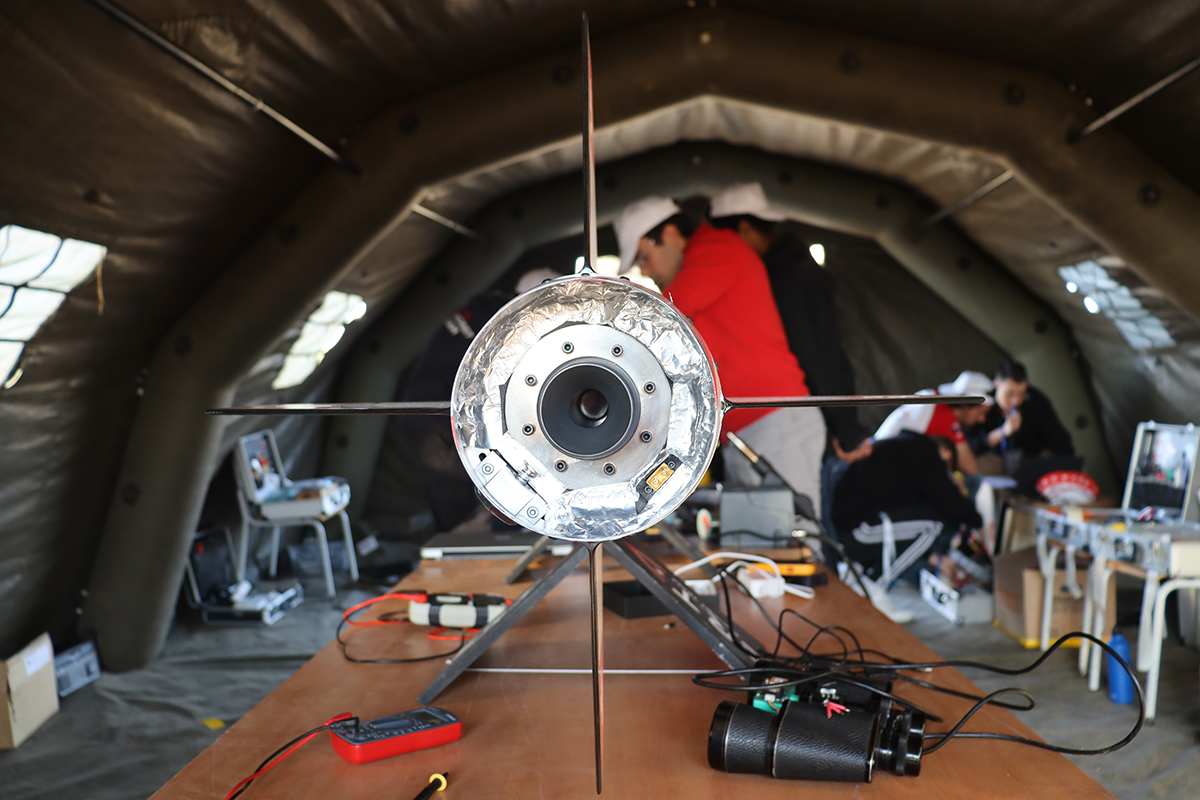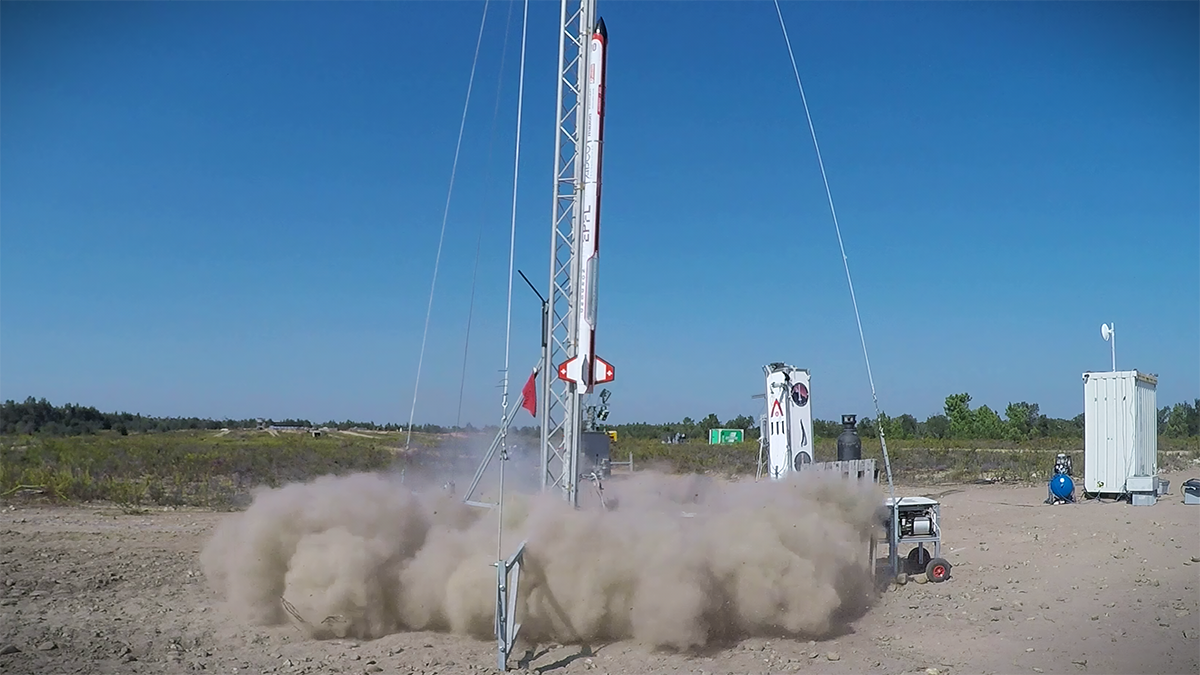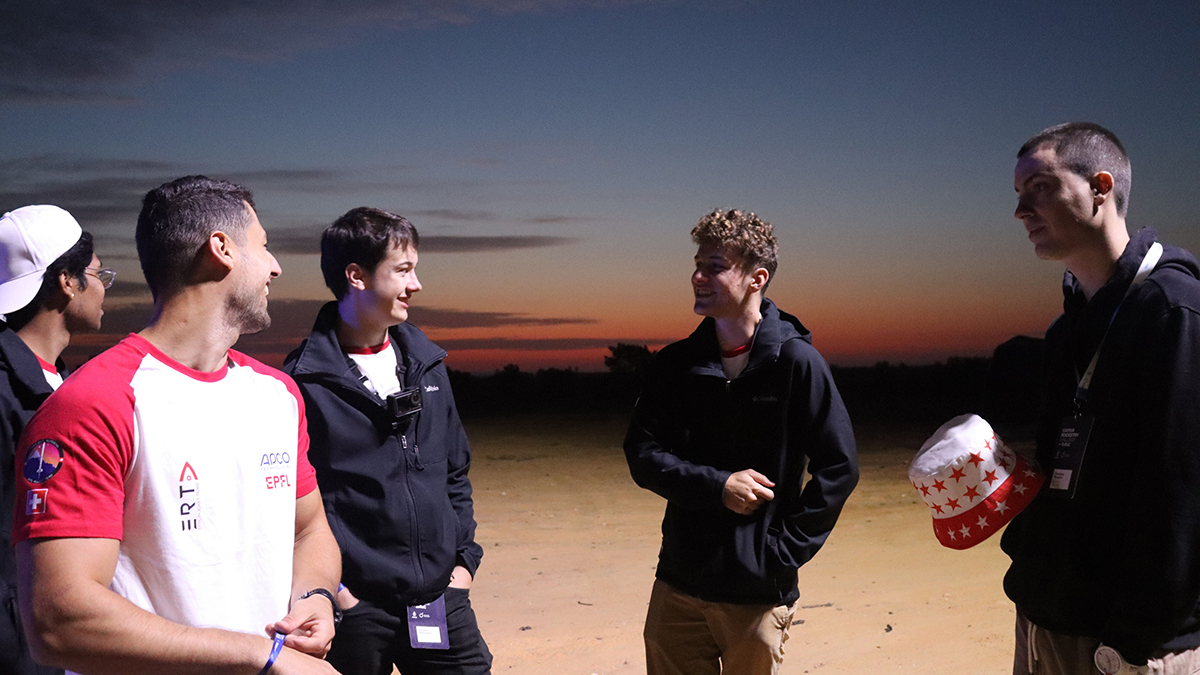20.11.23 - In October 2023, the EPFL Rocket Team participated in the European Rocketry Challenge – EuRoC 23 – in Portugal. The team, which won in 2021 and came in third last year, created a different kind of rocket this year, powered by a bi-liquid engine instead of conventional rocketry amateur propulsion methods. Unfortunately, the engine shut down after two second of flight and 200 meters of altitude, and the rocket fell to the ground. In spite of the crash, the Rocket Team was still awarded second place for technical excellence.
Antoine Marchand, Chief Technical Officer, explains to us what happened, what the team has learned, and how they’ll approach next year.
What made this year’s rocket different than other years?
In the past, our rocket designs revolved around conventional amateur rocketry propulsion methods, primarily utilising solid and hybrid engines. However, our latest rocket, developed for the 2023 EuRoC competition, was powered by a bi-liquid engine. Bi-liquid propulsion technology involves the controlled ignition of two pressurised fluids within the engine, resulting in exceptional efficiency. This technology is typically reserved for commercial-grade, full-size rockets due to its inherent complexity. Nevertheless, we undertook the challenge of designing, testing, manufacturing, and successfully incorporating this bi-liquid propulsion system into our rocket in under a year. Our rocket was the first Swiss bi-liquid-propelled rocket to ever take flight.
The innovation in propulsion technology was not our sole achievement. Our rocket, named Nordend, also underwent significant advancements in the structural, avionics, and recovery departments. These improvements contributed to our remarkable second-place ranking for technical excellence at EuRoC.

What happened during the launch?
The engine ignited perfectly; the first 2 seconds of flight were nominal. However, a critical issue arose when the engine abruptly shut down. The rocket coasted to about 200 meters before falling down, and to our dismay, the parachute failed to deploy! It then impacted the ground at a high velocity.
After the unexpected crash, I had a moment of shock. The flight took an unforeseen turn that I hadn't fully prepared for, despite a year of planning every feasible scenario. The entire team also seemed to be in a state of shock, and there was a profound silence for about five minutes.
Thanks to the other systems, which worked perfectly during the flight, we managed to gather enough analysable data, which allowed us have a better understanding of what happened. Quickly afterwards, we regrouped to collect all available data, including telemetry, photos, videos, locations, and events, to learn from the experience. I think that’s one thing that I think makes our team special, we always try to help each other, understand, learn, and improve, together, with our multiple cultures and knowledge.

What went wrong on a technical level?
Our bi-liquid engine relies on a nitrogen pressurising system in order to push the liquids from the tanks towards the engine. Our investigation indicates that an electronic malfunction may have rendered this pressurisation system inoperative from liftoff until approximately seven seconds into the flight. This brief period without adequate pressurisation led to the untimely engine shutdown. It can be compared to a weak campfire: if you blow on it, it will grow, but if you leave it as is, it will eventually die out.
As for the failure of the parachute deployment, this was also attributed to an electronic issue, likely arising from the manufacturer’s coding of the onboard system. Rockets traveling at high speeds are subjected to aerodynamical phenomena, which can confuse the electronics and cause the parachute to prematurely deploy, which at high speeds, is dangerous. Thus, it is advisable to introduce a delay during which the electronics remain inactive until the rocket decelerates to a safe speed for parachute deployment. We were not expecting the aforementioned aerodynamic phenomena, so we de-activated the delay, but given that the electronics board did not trigger the parachute deployment, we think that the delay might have still been activated. We don’t know how or why the delay could have been activated, but these commercial electronic boards are famous for being unreliable and for displaying incorrect states and values.
What did you learn from the EuRoC experience?
We gained valuable insights from our EuRoC experience. We showcased our operational excellence by being the first team at the launch pad on the opening day, at 10:30AM, with such an early start that EuRoC officials had to adjust their schedule for us. We also learned that, in comparison to other participating teams, we maintained our high standards in technical prowess, technical reports, and design, reassuring us that our commitment to quality remains intact.
There is a saying in the engineering world: “You learn more from a failure than a success.” Regrettably, we did not gain as much from this failure as we would have hoped. The launch mishap served more as a reminder of the omnipresence of Murphy’s Law in aerospace. We had two successful flights in consecutive years before this incident, which had perhaps caused us to momentarily forget the importance of meticulous, testing for some component of the system. In rocketry, even a 99 percent system success rate can crumble if just 1 percent goes unchecked.
Our goal of reaching space before the decade’s end remains our number one goal. To achieve this ambitious endeavour, there is still much work to be done. In the coming year, we aim to launch our homemade bi-liquid hopper, an 80kg drone powered by our bi-liquid engine, which will also be a first in Switzerland. In 2025, we plan to send our new bi-liquid rocket, Firehorn, to an altitude of 9km at EuRoC, which will break the student bi-liquid rocket height record. Firehorn’s innovative architecture should also allow us to achieve a 30km flight in 2026, bringing us one step closer to space.
Overall, our performance at EuRoc was one of our best, both technically and in terms of teamwork. It's essential to remember that the rocket's flight is just one part of the larger journey. Focusing solely on flight success would mean missing the broader purpose of the EPFL Rocket Team.
